| Title | Pages |
|---|---|
| Utilization of Hydrophobic Interaction Affinity Nanosorbent For The Extraction Of Serotonin From Edible Plants The aim of this study was to evaluate the extraction performance of poly(hydroxyethyl methacry-late-methacryloyl-(L)-tryptophan methyl ester) poly(HEMA–MAT)] nanostructures for serotonin from edible plants by a series of batch experiments. Average size of nanostructures was found as 100 nm with polydispersity index of 1.189 using zeta size analysis results. Maximum serotonin uptake capacity of the nanostructures was found to be 2901.4 ± 65.9 mg/g at pH 6.0. Applicabil-ity of this nanosorbent for the extraction of serotonin in banana and tomato before HPLC analysis was also studied and the level of serotonin was determined as 86.26 mg/g for banana and 36.02 mg/g for tomato samples. 
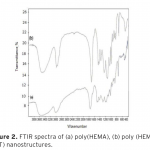
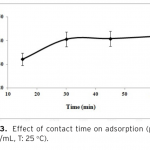
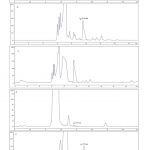
|
453 - 463 |
| The Tick (Acari: Ixodida) Fauna of Forested Area of Beytepe Campus Ticks (Acari: Ixodida) are bloodsucking ectoparasites that affect human and animal health worldwide. This study was carried out in forested area of Beytepe Campus at two sampling periods between November 2014-April 2015 and November 2015-April 2016. One hundred fifty four specimens belonging to four species were collected from host animals and from vegetation via flagging method and CO2 baited trap. Ticks were identified as Hyalomma aegyptium, Haemaphysalis parva, Rhipicephalus bursa and Rhipicephalus sanguineus complex. Haemaphysalis parva (62.98%) was the most abundant tick species in both sampling periods. Hyalomma aegyptium ticks parasited mainly on tortoises. The highest number of ticks were collected in April (42.85%). 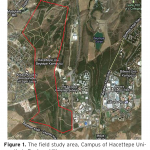



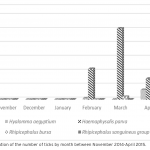
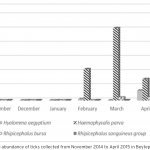
|
465 - 473 |
| A Case Study on Profile Investigation of Cold-Pressed Black Cumin Seed Oil Produced in Turkey Nigella sativa L. (black cumin seed) is an extensively used medicinal plant all around the world. Its chemical com- position contains many pharmacologically active components. In this study, Nigella sativa L. seeds originated from Mersin, Turkey and oil was obtained using cold-press technique. Chemical composition of cold-pressed black cumin seed oil (BCSO) was utilized in terms of sterol composition, fatty acids composition, triacylglycerols, thymo- quinone and physical properties of refractive index and color were evaluated. The major sterols were β-Sitosterol, followed by sitostanol, Δ5-avenasterol and Δ7-avenasterol. The major unsaturated fatty acids were linoleic acid and oleic acid while the major saturated fatty acid was palmitic acid. The most founded triacylglycerol components are LLL, OOLn+PoOL, POL+PoPoPo+PPoL, PoOO and PoOP+SPoL+SOLn+SPoPo. Concentration of the thmoquinone in the cold-pressed black cumin seed oil was calculated as 10099±117 mg/kg. Refractive index was measured at three dif- ferent temperatures (20°C, 25°C and 40°C) and Red (R), Blue (B), Yellow (Y) and Neutral (N) colours were measured with tintometer. The results from the proposed study that cold-pressed black cumin seed oil may supply as a brilliant nutritional source of thymoquinone and natural antioxidants. In terms of oil major components, composition of Nigel- la seed oil from Mersin, Turkey is similar with other countries and other cities from Turkey which are given literature although some chemical and physical components were shown differences according to agronomical conditions and extraction techniques. 
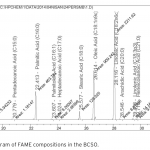
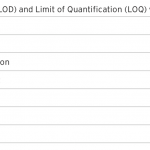

|
475 - 484 |
| Synthesis of Barringtogenol C Derivatives and Their Cytotoxic Activities Aseries of barringtogenol C (1) derivatives (2a-c, 3a-c, 4a-c, 5a-d, 6a,b and 7 were synthesized and screened in cytotoxicity assay against various cancer cell lines (HeLa, A549, U87MG, CaCo-2 and MCF-7) together with the normal cell line Vero. Many of the compounds screened have been found to have significantly improved anti-cancer potency in comparison with doxorubicin or barringtogenol C (1). Compound 3a was found to be 26-fold more active than doxorubicin. It was also not toxic to the non-tumoral Vero cells tested under in vitro conditions. In conclusion, compound 3a tested strong cytotoxicity against cancer cells, which could be a promising anti-cancer lead compound for further studies. 

|
485 - 498 |
| Color Removal of Some Textile Dyes from Aqueous Solutions Using Trametes versicolor Dyes are used in textile industry frequently. Wastewater treatment with biological methods is effective and also economic. Trametes versicolor was used to degrade Reactive Blue 19, Acid Black 194, Reactive Orange 12, Reactive Red 120 and Reactive Blue 21 in. As a result of the comparison of decolorization percentage, Re- active Blue 19 (Solazol Blue BB) had the maximum rate as 99%. Optimum pH for decolorization of Reactive Blue 19 was determined as 4, decolorization was not affected from low temperature, and however decreased decolorization rate was observed when the temperature increased over 60°C. Increasing dye concentration effected negatively decolorization process. According to these results, T. versicolor deserves notable atten- tion for decolorization of dyes in wastewater treatment. 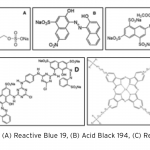

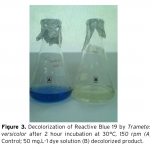

|
499 - 507 |
| A Novel, Simple and Green Capillary Electrophoresis Determınation of Sertraline in Pharmaceutical Dosage Forms Asimple, accurate, precise and economical capillary electrophoresis method has been developed for estimation of Sertraline in pharmaceutical dosage form. The estimation of Sertraline was done at 205 nm in pH 4.0 phosphate buffer. In the developed method, linearity over the concentration range of 1-12 μg.mL-1 of Sertraline was observed. The linear regression was found to be 0.999. The results of analysis have been validated statistically and recovery studies confirmed the accuracy of the proposed method. The precision (intra-day & inter-day) of method was found within limits (RSD < 2%). The sensitivity of the method was assessed by determining limit of detection and limit of quantification. It could be concluded from the results obtained in the present investigation that the method for estimation of Sertraline in pharmaceutical dosage form is simple, rapid, accurate, precise, green and economical, also it could be used, successfully, in the quality control of pharmaceutical formulations and other routine laboratory analysis. 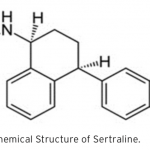
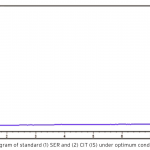
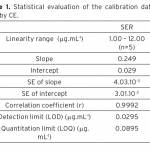
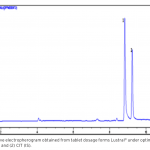
|
509 - 514 |
| Development of a Flow-Injection with Spectrophotometric Method for Total Iron in Water Samples Asimple spectrophotometric flow-injection method is reported for the highly sensitive and fast determina- tion of iron(III) and total iron. The method is based on the formation of iron(III)- (1-nitroso-2-naphthol-3,6 sulphonate) (NRS) complex. The optimum conditions for the reaction of iron(III) with NRS is studied. And the complex is selectively monitored at λmax370 nm. With the reagent carrier solvent used was 5x10-4 M 1-nitroso-2-naphthol-3,6 sulphonate in 0.1 M acetic acid-acetate buffer solution at pH 4.0. Parameters affect simultaneously for the determination of iron(III) and interfering ions were tested. Relative standard deviation for five consecutive injections of 70 μg.L-1 iron(III) was 1.46% and for 5 μg.L-1 iron(III), it was 3.12%. The calibration graphwaslinearintheiron(III)concentrationrange0.1-100μg.L-1 andthelimitofdetectionwas0.05μg.L-1 for a 20 μL injection volume. The precision and accuracy of the method were checked by analysis of certified reference material and AAS method. The method was successfully applied to determine trace amounts of iron(III) and total iron in river and sea water samples. 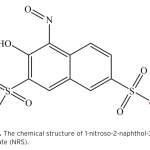
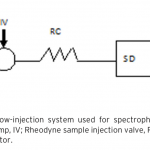

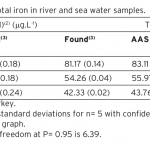
|
515 - 522 |
| Microbial Removal of Cyanide Compounds and Soil Cyanide by K. oxytoca In this study, K. oxytoca ATCC 13182 degraded potassium cyanide, potassium hexacyanoferrate(II) trihydra- te, potassium tetracyanonickelate(II) hydrate and sodium ferrocyanide decahydrate with the efficiencies of 100%, 87%, 78.5% and 27.5%, respectively. Additionally, optimal conditions for cyanide biodegradation were found as 30°C, 100 rpm and pH=7 at the concentration of 0.5 mM potassium cyanide in the biodegradation medium. Furthermore, K. oxytoca degraded potassium cyanide in the presence of different ions (Mg, Ni, Co, Fe, Ca, Cr, As, Cu and Zn) and as a result the growth amount of K. oxytoca decreased as the ion concentrations increased. It is also observed that 5:10 (v:v) concentration of sterile crude extract of K. oxytoca degraded 73.5% of the cyanide content in the biodegradation media in the first 24 hours. Finally, it is examined that 6 mgkg-1 and 240 mgkg-1 cyanide in soil samples were also degraded partially by K. oxytoca’s culture and sterile crude extract. 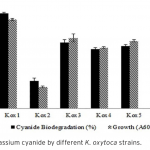

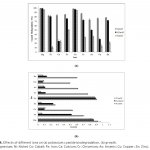
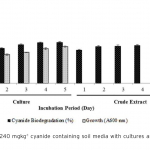
|
523 - 531 |
| New Ascomycete Record for Turkish Mycobiota In the current study, Peziza succosella (Le Gal & Romagn.) M.M. Moser ex Aviz.-Hersh. & Nemlich was reported for the first time from Turkey. Microscopic drawings and description of the taxon were given together with morphological photograph. In addition the current list of the genus Peziza in Turkey was presented. 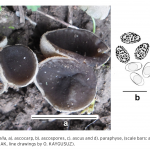
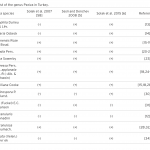
|
533 - 537 |
| Pom34 mRNA is the Only Target of the Sesa Network MPS2 is an essential gene required for the insertion of Saccharomyces cerevisiae centrosome into the nuclear membrane. Upon its deletion, cell cycle is stopped and the cell dies. Recently, we reported that SESA network can suppress essential role of MPS2. Detailed analysis showed that SESA is a system which suppresses centrosome duplication defects by inhibiting the translation of a subset of mRNAs selectively. In this study, we report the results of a genome-wide deletion screen which unearthed Pom34 mRNA as the only target of the SESA network. 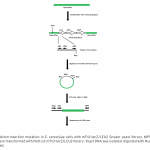
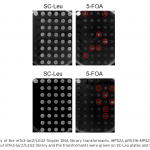

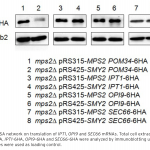
|
539 - 545 |
| Comparison of Physical and Biochemical Properties Between Pure and Adulterated Blossom Honeys The purpose of this study was to find new parameters permitting the identification of adulterated honeys. For this reason, different qualities of adulterated honeys were produced. Honey bee colonies fed with three different sugar syrups, high fructose corn syrup 55 (HFCS-55), sucrose syrup and invert sugar syrups at 3 L/day in one concentration (1:1.5 g/v) for 15 days. After harvest, some physico-chemical (13C/12C, C4%, pH, moisture, optical rotation, electrical conductivity, sugar analyses, proline and diastase) and biological (total phenolic contents, phenolic profile, and antioxidant capacities) properties of the honeys were analyzed and compared. Conductivity, proline content, total phenolic content, diastase activities and antioxidant properties of the honeys were found distinguished parameters. Antioxidant capacity was significantly decreased in adulterated honeys. 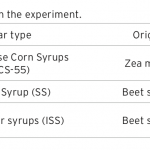
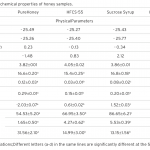

|
547 - 556 |
| Comparison of Proline and Arginine Contents of Pomegranate and Grape Juices in Turkey for the Detection of Juice Adulteration Pomegranate is a fruit that is very popular at the moment due to its many reported health benefit effects. Consumer demands increased to 100% pomegranate juices. Pomegranate juice is subject to adulteration due to its high price. Grape juices are one of the juices used for the pomegranate adulteration. In this study, the contents of major amino acids of grape, i.e. proline and arginine were compared to corresponding amino acids of pomegranate using a micellar electrokinetic chromatographic analysis method coupled with laser induced fluorescence detection. Arginine was found significantly (p 0.001) higher in grape juices compared to pomegranate juices. This amino acid was proposed a possible grape adulteration marker for pomegranate juices. 
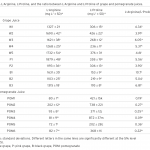
|
557 - 562 |
| Chemical Oxidation of 5-amino quinoline with (NH4)2S2O8: Synthesis and Characterization 5-amino quinoline (AQ) was chemically oxidized in (NH4)2S2O8/HCI system, whose structure was identified by UV-vis, FTIR, 1HNMR and 13CNMR analysis. Spectral analysis results indicated the formation of phenazine like units in the oxidation product and C3, C6, C8 positions of quinoline ring were suggested as a possible polymerization sites. Size exclusion chromatography indicated the oxidation product (OAQ) consisted of oligomeric units (1200 g/mol). OAQ was thermally stable and half of its mass was decomposed at 1000°C. 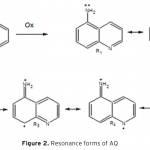
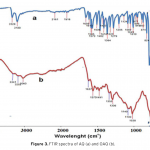
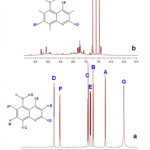

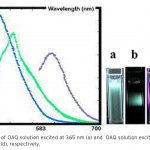
|
563 - 571 |
| Degradation of Crystal Violet Dye from Waters by Layered MnO2 and Nanocomposite-MnO2@MnFe2O4 Catalysts In this study, the removal and degradation of a basic triphenylmethane dye “crystal violet” (CV) was investi- gated by using layered MnO2 and MnO2 @MnFe2O4 nanocomposite catalysts in aqueous solutions in the presence of H2O2. The reaction was faster with the layered MnO2. The catalytic degradation of CV was traced by analyzing the degradation products using Electrospray Ionization-Quadrupole-Time-of-Flight-Mass Spectrometry (ESI-Q-ToF-MS). 4-isocyanobenzaldehyde (A) and Michler’s ketone (B) were identified as main intermediates both of which can potentially be bioremediated to mineralization products. MnO2/H2O2 thus appeared to be an encouraging catalyst system in converting CV to biodegradable fragments. 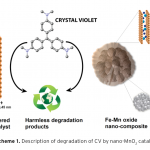
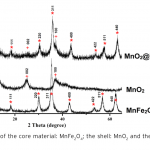
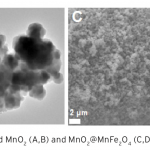

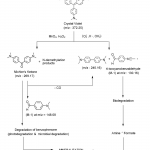
|
573 - 580 |
| Major Constituents of Different Propolis Samples Propolis is a resinous material collected from plant by honey bees. The aim of this study is to investigate the chemical composition of Hakkari (Turkey) propolis. For this, eight propolis samples collected from different geographical locations were extracted in ethanol and then chemical content of samples were detected by Gas Chromatography and Mass Spectrometry (GC-MS). As a result, hydrocarbons, aliphatic acids and their esters, carboxylic acids and their esters, cinnamic acids and their esters, flavonoids, alcohols and terpens were determined in propolis samples. It was found that total flavonoid content of propolis 6 (P6) was significantly higher than other samples. Also, ‘Ethyl oleate’ compound was identified in all samples with different amounts. 
|
581 - 584 |
| Molecular Characterization of Some Soil Originated Trichoderma Species The aim of this study was the molecular characterization of the some Trichoderma species which were pre- viously isolated by cultural sampling methods from agricultural soils. A 20 of of 39 strains of Trichoderma which were identified to species level by morphological data.were molecular characterized. Their characterization were based on the internal transcribed spacer regions 1 and 2 (ITS 1 and ITS2) of ribosomal RNA (rRNA) and a fragment of the translation elongation factor 1-alpha (tef1 gene) sequences. Based on the sequence data and cultural examinations, strains were grouped into four which are included in : afroharzianum, atroviride, gamsii and harzianum. Among them,T. gamsii was the most encountered species. The species T. afroharzianum was reported as the first time for Turkey. 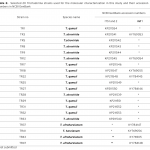


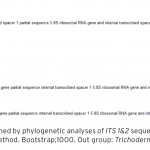
|
585 - 591 |
| Solid State Fermentation for Cultural Conditions Optimization and Production of α-Amylase from Bacillus licheniformis ATCC 12759 The aim of this paper is to study influence of the certain production parameters of α-amylase by Bacillus lic- heniformis ATCC 12759. Various agroresidues as substrate were studied for enzyme production. The highest enzyme production was expressed with rice bran as units per mass of dry substrate (1399.8±6.6 U/mg). Optimization parameters of α-amylase production were carried out with solid state fermentation (SSF). Solid waste from rice bran used as the basic nutrient source. Supplementation with carbon and metal salt sources decrased the enzyme production. Certain fermentation parameters involving incubation time, incubation temperature, inoculum level, moisture level, extraction medium, initial pH and medim volume were studied separately. Maximal amount of α-amylase production (2094.9±53.1 U/mg) was obtained inoculum level 30%, moisture level 20%, initial pH 6.5 at 37°C for 48 h with supplementation of ammonium cloride. 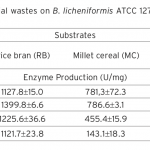
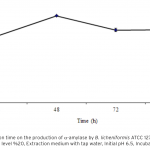
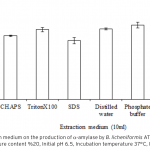
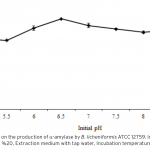
|
593 - 602 |
| Promising Strain of Acinetobacter from Soil for Utilization of Gluconic Acid Production Gluconic acid, a food additive, is used in many foods to control acidity or binds metals such as calcium, iron. Acinetobacter sp. WR326, newly isolated from soil possesses high phosphate solubilizing activity and do not require pyrroloquinoline quinone (PQQ) for glucose dehydrogenase (GDH) activity as cofactor In this study the gluconic acid production potential of this bacterium was investigated. Firstly, Acinetobacter sp. WR326 was incubated in tricalcium phosphate medium (TCP) with varying glucose concentrations (100, 250, 500 mM), at a temperature of 30°C for 5 days (120 hours). The highest gluconic acid yield (59%) was found at a glucose concentration of 100 mM. Then three different levels of gluconic acid addition to the medium (50, 100, 200 mM) were tested. When Acinetobacter sp. WR326 strain was cultivated with a 100 mM glucose and 100 mM gluconic acid the yield increased to 95.27%. In any trials 2 -keto D-gluconic acid, causes problems in processing and purification of the gluconic acid, was not detected in the medium. As a conclusion, Acinetobacter sp. WR326 may be considered novel potential bacterial strain for gluconic acid production. 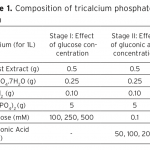
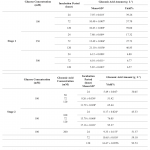
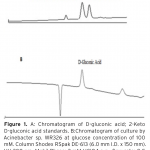
|
603 - 607 |
| Subchronic Exposure of Heat-induced Food Contaminant Acrolein: Evaluation of Toxicological Effects on Male Reproductive Tract from Weaning to Postpuberty Acrolein is a very electrophilic α, β aldehyde, formed in foods by thermal processing of amino acids, fats and carbohydrates. Due to lack of toxicological information about acrolein exposure, male rats from weaning to postpubertal period was evaluated in terms of reproductive toxicity. Weaning male rats were orally exposed to 0.5, 1 and 2 mg/kg/day acrolein for 90 days. Serum testosterone and lutenizing hormone (LH) levels were measured and sperm paremeters were evaluated. Reproductive organs were examined histopathologically. Although several histopathological alterations were observed in reproductive organs of rats in acrolein treatment groups, no changes were observed in hormone levels and sperm count. 
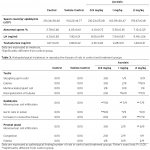
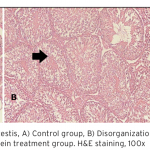

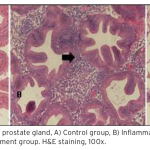
|
609 - 616 |
| The Growth and Reproduction Characteristics of Neogobius melanostomus Populations in its Native Habitat of Lake Karaboğaz (Black Sea, Turkey) The age and size composition, growth rate and reproductive biology of the round goby, Neogobius melanos- tomus, were studied from 266 specimens from August 2011 to August 2012. The ages of N. melanostomus ranged from I to IV years, with age class II years dominant. The female:male ratio of the sample was found to be 0.62:1. The results indicated that the total value of the whole population size varied from 91 mm to 190 mm and the weight value varied from 12 g to 119 g. The minimum and maximum total length for female and male were 100-166 mm and 91-190 mm, respectively. According to these results, it was determined that the growth values of N. melanostomus living in Lake Karaboğaz are significantly higher than Great Laurentian Lakes Basin, and lower than Baltic Sea populations. The sexual maturation age of N. melanostomus was year I for female and year II for male and the reproduction period of this species was in April - September. The highest number of eggs of N. melanostomus population living in Lake Karaboğaz was 2477 but it was determined to be lower than the expected values. 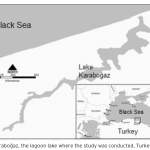
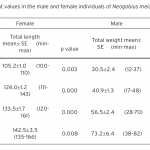
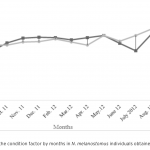
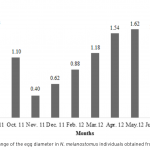
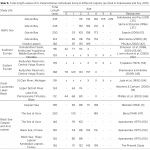
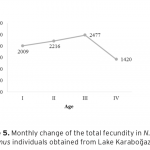
|
617 - 628 |
| Carbonic Anyhdrase Enzyme From The Siirt Mohair Goat Liver : Purification, Characterization and Assessment of Enzyme Kinetics Against Metal Toxicity Because of their physiological and clinical roles, carbonic anhydrases (CAs) are the most stud- ied enzymes. In earlier studies; CA enzymes have been purified and characterized from the tissues and erythrocytes of many organisms such as; dog, swine, sheep, chicken, bee, fish, bovine, bacteria and human. In this study, the CA enzyme has purified from Siirt Mohair Goat liver tissue with 1930.84 EU x mg-1 of specific activity, 57.28% of purification yield and 80.55 of purification folds. The purity of the purified enzyme has confirmed by SDS-PAGE. As the characterization of CA enzyme’s in Siirt Mohair Goat liver has been done; the optimum ionic strength=25 mM, the optimum pH= 8.0, the optimum temperature= 40°C and the stable pH= 7.0 has been determined. Inhibitory effects of some metal ions have been examined on the purified CA enzyme. IC50 values of inhibiting metal ions were found as 2.24, 2.76, 2.36, 3.20, 2.55, 2.25, 3.28, 2.13, 3.10, 1.75, 2.16 and 3.50 mM for Al3+, Ni2+, Cd2+, Cu2+, Pb2+, Ba2+, Zn2+, B3+, Fe3+, Se2+, Ag+ and Co2+ respectively. As a result, CA enzyme was first purified from the Siirt Mohair Goat liver and the characteristics of the enzyme were investigated in this study. 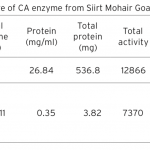

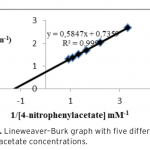
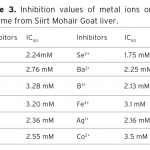
|
629 - 634 |
| Can Food Supplement Produced from Apilarnil be an Alternative to Testosterone Replacement Therapy? Apilarnil is male honey bee (Apis mellifera) brood homogenate, firstly used on elders have psychotic, neurodegenerative or sexual disorders in Romania by Nicola Iliesu in 1980. It has high nutritional value and a cheap source of biologically active substances. It consists of water (65–75%), proteins (9–12%), carbohydrates (6–12%), fatty acids and lipids (3.5–8%), minerals K, Na, Ca, Mg (1–1.5%), essential amino acids (threonine, leucine, isoleucine, methionine) and also it is rich in sex hormones such as testosterone, prolactin, progesterone and estradiol. Some defined chemicals in lipid portion and hormones are included in Apilarnil should be responsible by androgenic effect. So, it may enhance the androgenic activity for patients with androgen deficiency syndrome. Lower androgenic activity named as androgen deficiency syndrome. It causes reduced growth of penis end testes in early ages, failure to go through full normal puberty, gynaecomastia, poor development of facial, body or pubic hair and voice does not deepen in early teenagers, mood changes, reduced muscle strength, increased body fat, decreased libido, difficulty getting and keeping erections, low semen volume and gynaecomastia in adults. In this article, Apilarnil having an androgenic content and whether or not it is effective for the androgen deficiency syndrome has been prepared and interpreted by compiling studies on Apilarnil in the literature.
|
635 - 638 |
| Design of PHEMA Cryogel as Bioreactor Matrices for Biological Cyanide Degradation from Wastewater Cyanide is a hazardous substance and a toxic contaminant but it is found in the environment as a natural product of industrial activities. Biological methods are an alternative and promising potential approach to the conversion and destruction of other toxic byproducts that can be formed by both cyanide and chemical treatment. It is known that a lot of fungi, bacteria and some plants are used in biological treatment works. Trichoderma is a genus of fungi that has enzymes for cyanide destruction. It is known that microbial activity under aerobic conditions cyanide can be converted to ammonia and then nitrate by oxidation. Cryogels are gel matrices synthesized at temperatures below zero using monomeric or polymeric precursors. Polymeric network occurs while the solvent forms ice crystals. After the ice crystals melt, polymeric matrices with large pores are formed. Cryogels are used in a variety of areas of biotechnology, including chromatographic materials, carriers for immobilization of molecules and cells. In this study, poly(2-hydroxyethyl methacrylate) (PHEMA)-based Triccoderma spp. embedded supermacroporous cryogels were synthesized for cyanide destruction. The polymeric materials prepared were tested for cyanide degradation at different pH, temperature and initial concentrations to examine their suitability for this purpose. 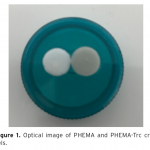
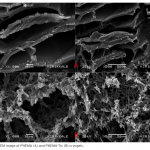
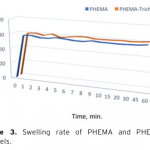

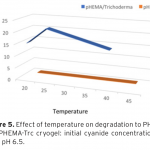
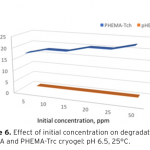
|
639 - 645 |